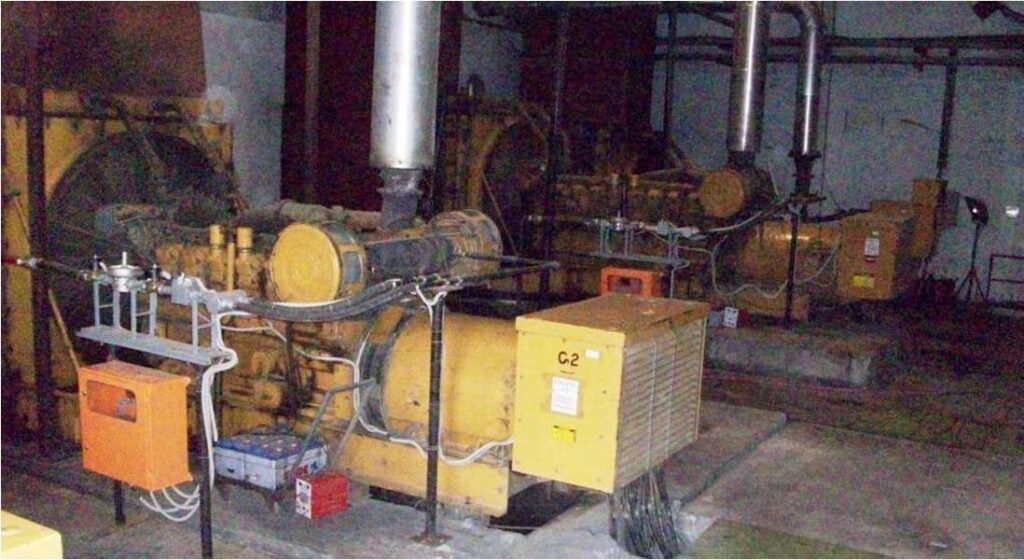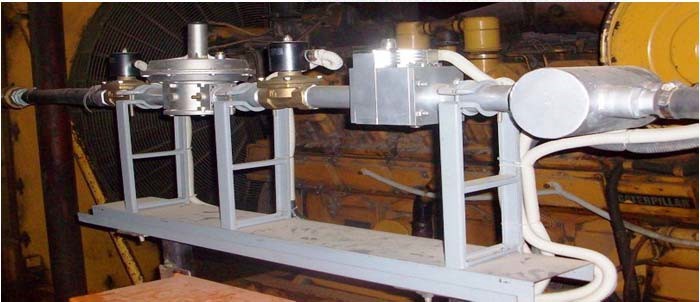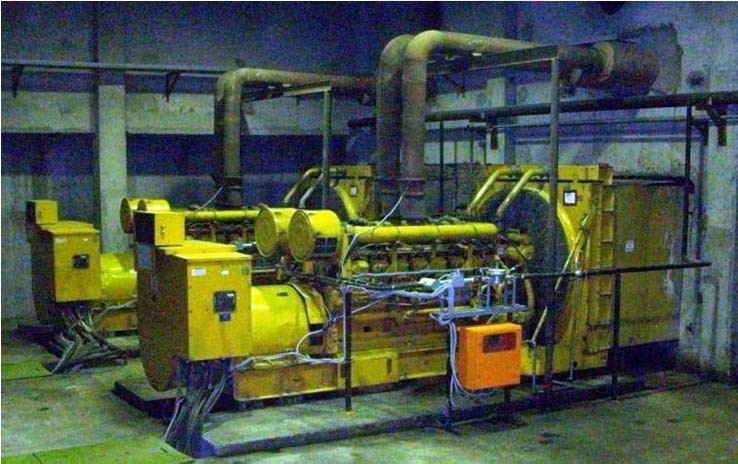8 Mega Watt Dual Fuel Conversion 6 x Caterpillar 3512B and 3516
Diesel Consumption = 1320 liters/hour (gross)
Dual Fuel – 60:40 Gas: Diesel (customer approved average)
SAVINGS: 800 liters of diesel / hour approx. 40,000 USD / month / generator
Remote Monitoring of Dual Fuel operation AND Electronic Fuel Metering
Converting a Caterpillar Diesel Generator to operate on Dual Fuel (Bi-Fuel) using Natural Gas and Diesel provides several benefits that enhance operational flexibility, reduce costs, and improve environmental sustainability:
- Fuel Flexibility: Dual Fuel operation allows the generator to run on a blend of natural gas and diesel fuel. This flexibility enables operators to switch between fuels based on availability, cost, or operational requirements. Natural gas is typically cheaper than diesel fuel, offering immediate savings on fuel costs.
- Extended Run Time: During prolonged operations or emergencies, the ability to use natural gas alongside diesel fuel extends the generator’s run time. This reduces the need for frequent refueling, enhancing operational efficiency and reliability.
- Cost Savings: Utilizing natural gas, particularly when it’s available at lower prices, significantly reduces operating expenses compared to running solely on diesel fuel. This cost-effectiveness is crucial for managing overall operational budgets.
- Emissions Reduction: Natural gas combustion produces fewer emissions of particulate matter, nitrogen oxides, and sulfur dioxide compared to diesel fuel. By incorporating natural gas into the fuel blend, the generator can achieve lower emissions levels, contributing to environmental compliance and sustainability goals.
- Redundant Safety Measures: Modern Dual Fuel conversion kits for generators incorporate redundant safety features such as knock monitoring, instantaneous gas shut-off mechanisms, and demand-actuated inputs. These safety measures ensure reliable and safe operation during fuel transitions and varying load conditions.
- Maintained Generator Performance: Conversion to Dual Fuel typically does not compromise the generator’s performance characteristics, including rated power output, load response, and operational stability. The engine retains its reliability and durability, ensuring consistent power generation capabilities.
- Regulatory Compliance: Lower emissions from natural gas usage help generators meet stringent environmental regulations and emissions standards. This reduces regulatory risks and enhances the generator’s environmental footprint.
In summary, converting Caterpillar Diesel Generators to Dual Fuel operation using Natural Gas and Diesel enhances fuel flexibility, extends run time, reduces operating costs, and improves emissions performance. It’s a strategic investment for industries requiring dependable and cost-effective power generation while minimizing environmental impact.



